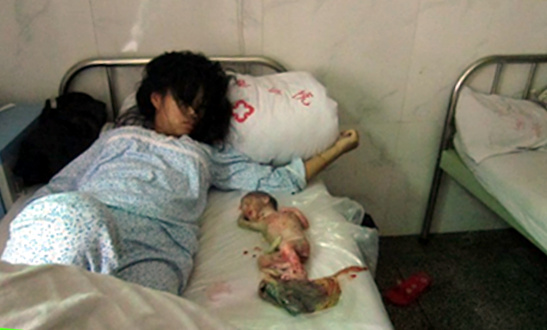Editor’s Note: This article was first published at National Right to Life News Today on May 24, 2013, and is reprinted with permission.
I so regularly trash the New York Times for its vast variety of errors of commission and omission that it is only right I offer praise for running “China’s Brutal One-Child Policy,” by novelist Ma Jian.
Whatever exceptions there may be in the one child policy, especially for the rich, according to Jian, for the poor, “the policy is a flesh-and-blood tiger with claws and fangs.”
Early in the op-ed we read:
Village family-planning officers vigilantly chart the menstrual cycle and pelvic-exam results of every woman of childbearing age in their area. If a woman gets pregnant without permission and is unable to pay the often exorbitant fine for violating the policy, she risks being subjected to a forced abortion.
According to Chinese Health Ministry data released in March, 336 million abortions and 222 million sterilizations have been carried out since 1971. (Though the one-child policy was introduced in 1979, other, less-stringent family planning policies were in place before it.)
These figures are easy to quote, but they fail to convey the magnitude of the horror faced by rural Chinese women. During a long journey through the hinterlands of southwest China in 2009, I was able to find some of the faces behind these numbers.
When you read Jian’s description, it is readily apparent why China has the highest rate of female suicide in the world. In remote areas he met what he described as “’ family-planning fugitives’–couples who’d fled their villages to give birth to an unauthorized second or third child in neighboring provinces.” Virtually every pregnant woman he talked to had suffered a mandatory abortion.
One woman told me how, when she was eight months pregnant with an illegal second child and was unable to pay the 20,000 yuan fine (about $3,200), family planning officers dragged her to the local clinic, bound her to a surgical table and injected a lethal drug into her abdomen.
It gets worse.
For two days she writhed on the table, her hands and feet still bound with rope, waiting for her body to eject the murdered baby. In the final stage of labor, a male doctor yanked the dead fetus out by the foot, then dropped it into a garbage can. She had no money for a cab. She had to hobble home, blood dripping down her legs and staining her white sandals red.
Occasionally you read hints in press accounts that the Party leadership is reconsidering—perhaps making the policy less stringent. There is much evidence to suggest otherwise plus a factor I had never taken into consider. The fines bring in an enormous amount of money “while allowing it to maintain firm control over people’s lives,” Jian writes.
His conclusion is a searing indictment and a call to action.
Ending this scourge is a moral imperative. The atrocities committed in the name of the one-child policy over the last three decades rank among the worst crimes against humanity of the last century. The stains it has left on China may never be erased.
If you like, join those who are following me on Twitter at twitter.com/daveha. Please send your comments to daveandrusko@gmail.com.








